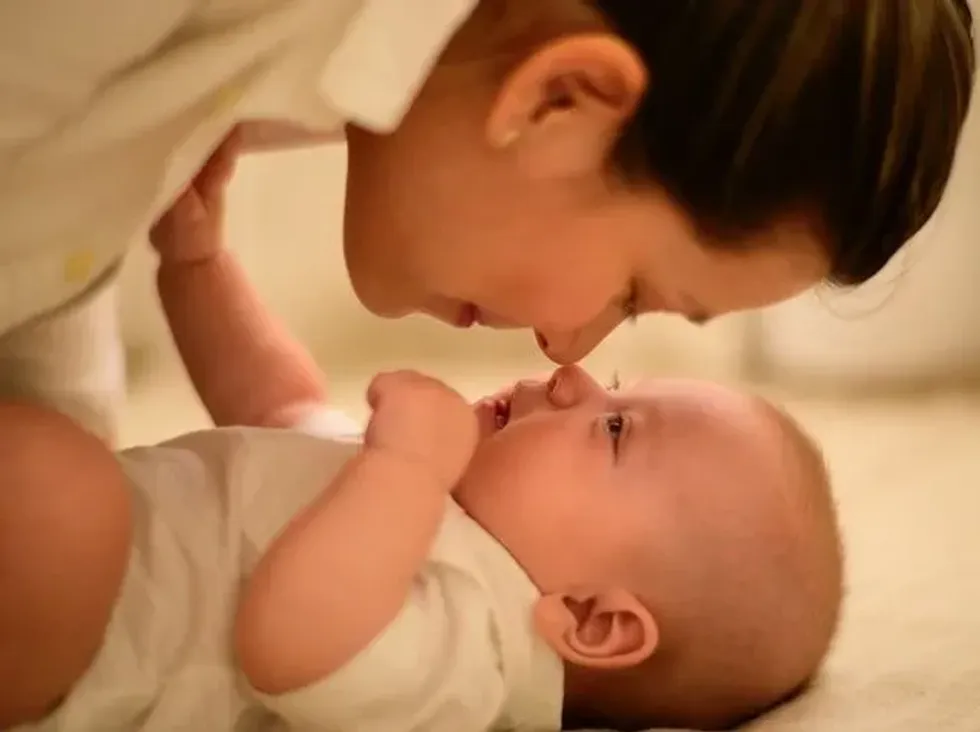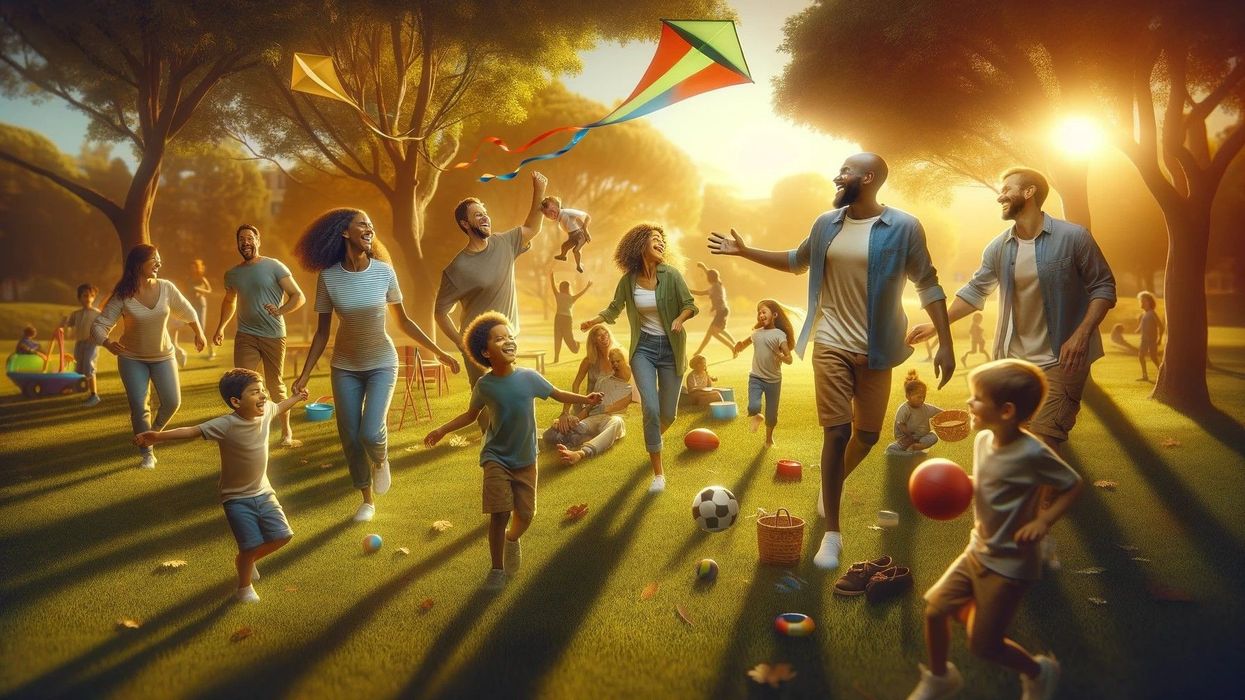Congratulations on making it through the first 10 weeks!
The fourth trimester (the first three months after your baby is born) is wonderful, tiring, and amazing. Now that your baby is 10 weeks old, whats are they getting up to?
Babies grow and learn at an alarming rate, we have rounded up all the things you can be expecting your little one to master around this stage in their development. Remember that babies are very serious about doing things at their own pace, our tips about 10-week-old baby development and milestones are just a guide.
To read more about developmental stages, why not take a look at our [11-week-old baby] and [15-week-old baby] guides too?
Sleeping
You might experience a 10-week-old baby sleep regression, as they often fall between the 8-12 week mark. Regressions can feel stressful for you and your baby, but thankfully they usually only last for a few days to a week.
Changes to your baby's sleep routine are usually due to a growth spurt and a surge in development (unless they are unwell of course, which also impacts sleep).
Your baby's body is hyper-focused on absorbing information and growing in every single way possible at the moment, so you may find your 10-week-old baby sleeping more overall. Generally speaking, babies of this age need between 14-17 hours of sleep every 24 hour period.
Despite the potential regression, one of the best 10-week-old baby milestones is that they can start to fall into a sleeping pattern. You will notice that they will like to have a feed and a nap around the same time each day.
It can be a bit of relief to have some routine, after the unpredictability of those early days with a newborn.
Food

At 10 weeks old, your baby is still getting all their nutrition from milk, whether you are breastfeeding or formula feeding. Your 10-week-old baby feeding schedule may be a little unpredictable but they will probably want a feed every two to four hours, feeding on demand is the best option to keep them full.
Following your baby's 'leaps' is a really useful way to track baby development by week. Growth spurts and fast-paced mental progression can result in one hungry baby, often the reason your baby is more fussy and hungry is that they are going through a leap.
Babies are pros at knowing how much food they need and when they're full, so as long as they are gaining weight and seem alert and happy, they are most likely getting enough.
Your baby will gain weight quickly in their first six to 12 months and then slow down. Breastfed babies tend to gain weight at a slower pace and weigh less than formula-fed babies, as a breastfeeding baby will stop eating when they are full, whereas formula-fed babies are often encouraged to finish their whole bottle at every feed.
By 10 weeks old your baby could be developing those characteristic chubby baby thighs and arms, you might need to go up a size in baby grows!
A note on pooping: as your baby gets bigger, their bowel is also growing so you may find they are pooping less. Your baby could even go a day or so without needing to poop, so don't be alarmed if this happens! That said, if your baby is still filling up nappies, that's normal too.
If you have any concerns about your baby's weight or feeding don't hesitate to speak to your midwife or pediatrician. Remember all babies are different and many factors play into their size.
Play & Movement

Your baby may discover their hands and feet now, and start working out how to use them, you may want to start tying long hair up and wearing non-dangly earrings, also watch out if you wear glasses!
This is a great time to start showing your baby a selection of toys, as they start to become more coordinated they will love being able to hold and touch things.
You will also notice your baby starting to do some super cute kicking and getting very excited about it, you will start hearing some cute baby giggles around now, along with lots of smiles.
Tummy time will be helping your baby to gain more strength in their neck now, laying down with your baby can gently encourage them to lift their head a little more each day.
As babies spend so much time on their back and tummy, it's easy to forget about the legs, you can massage them and create a 'cycling' motion to give them a bit of exercise too.
Baby yoga and massage are a great way to play and bond with your baby, massage is also a lovely way to wind down at the end of the day.
Your baby may also be quite sociable now and enjoy joining in with conversation by babbling and blowing raspberries! They will also respond to music, which is great for their development too, classical music and jazz will allow them to experience all sorts of sounds.
Because their eyesight is still developing, babies respond well to large simple shapes in bold colors, there are lots of baby sensory videos that use animations and shapes along with music.
A mobile above their cot and a playmat with a bar you can hang colorful and noisy toys from will help to develop baby's 3D vision, plus they will find them fascinating.
An important thing to remember is that your baby can easily be overstimulated. If you notice them starting to fuss, cry, and look away, they are telling you they've had enough and would benefit from some quiet time, perhaps a feed, a cuddle or just a walk in your arms.
Senses
Your baby's senses are rapidly developing and by 10 weeks they can recognize their parents and other familiar faces too thanks to this growth and development. Your baby is beginning to look around and really focus on things.
Although they can only see things up to 12 inches away, they will start being able to hold your gaze for up to 10 seconds at a time and follow you with their eyes as you move around.
When chatting to your baby, or singing and reading, they will watch your lips and begin to associate the movements with the sounds they can hear. Your baby will also have different reactions to different sounds, you may find they even have a favorite song they noticeably get excited about (let's hope it's not 'Baby Shark'!).
As your baby gets better at grabbing and gripping, they will enjoy more sensory-style toys like crinkly soft toys and rattles. Baby play mats with built-in textures are perfect for tummy time. Some have baby-safe mirrors sewn in, babies love their own reflections, and also looking at other babies so here you have both.
As baby becomes more aware of the world around them, you could notice their cries develop. This is your baby's main way of communicating with you.
If they cry and no one comes to them, they will try out different cries to see which one will work.
It is really important not to let their cries build-up and to go to them as soon as possible, leaving your baby to cry for too long and too often means eventually they give up altogether as they know there will be no response.
Babies who are responded to quickly actually cry less overall, as they know their needs will always be met.
If you would like to find out more about what to expect the first year and how to prepare for more infant milestones, then take a look at our sample [2-month-old schedules] and our top tips for surviving the 6 month sleep regression.










